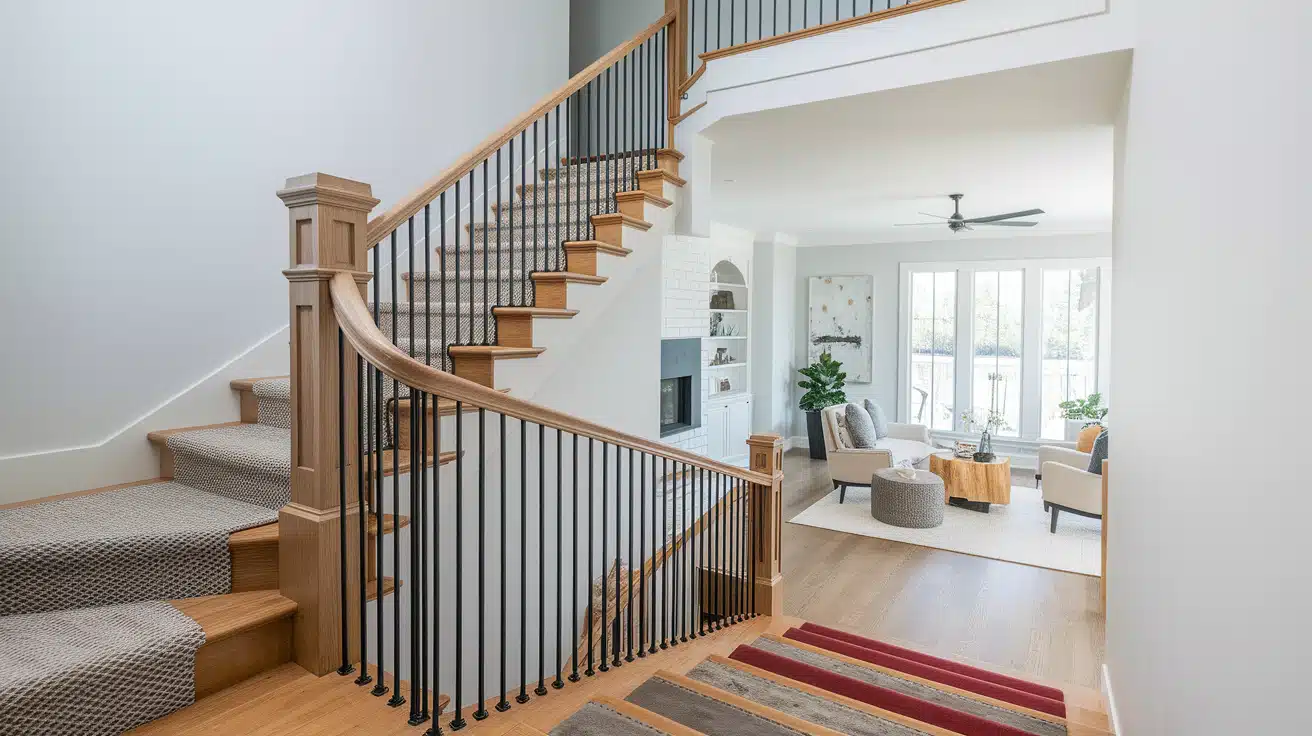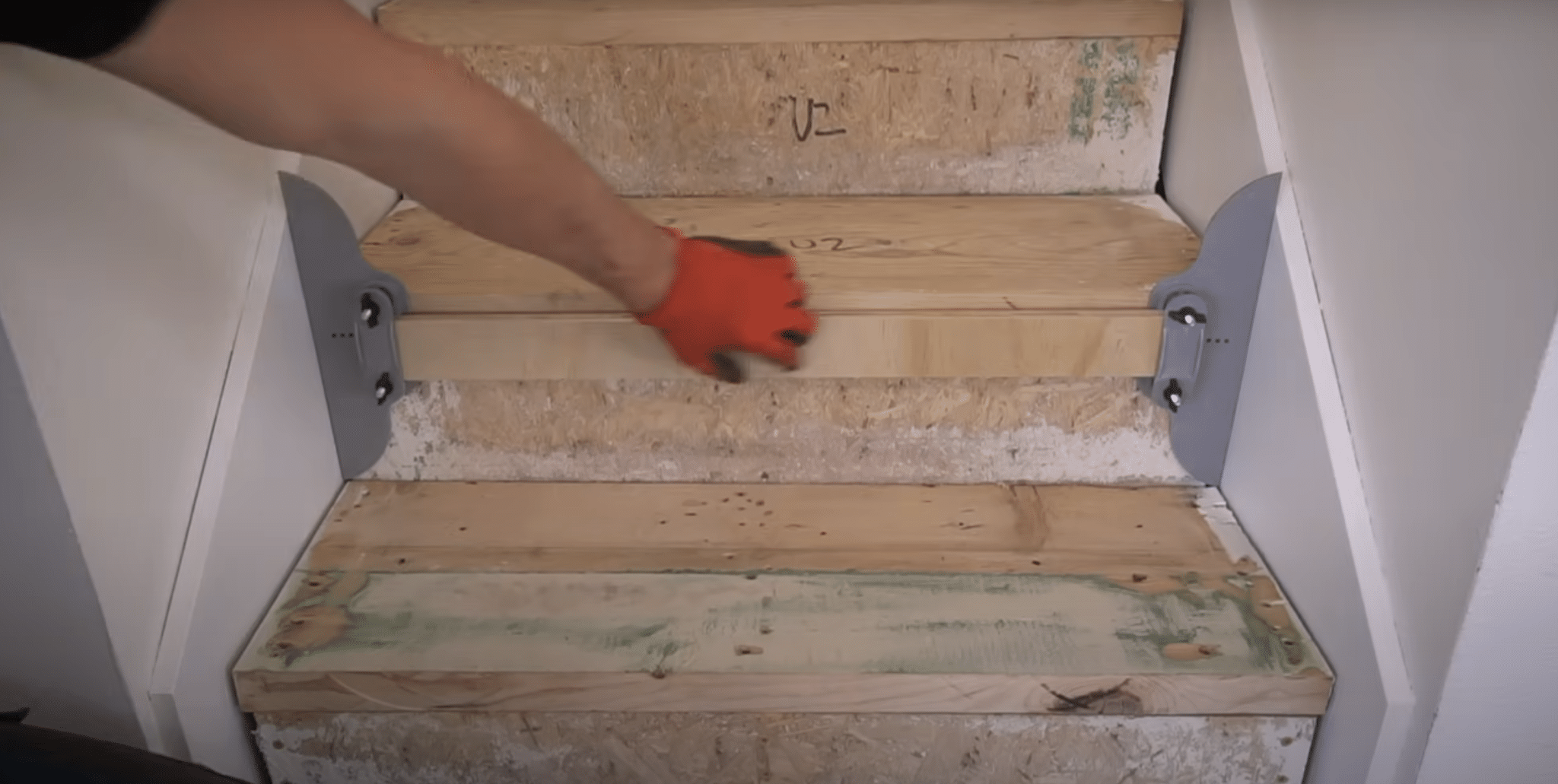Are your stairs looking worn out, outdated, or just plain boring? Most homeowners overlook this key area of their homes, missing a golden opportunity to transform their entire space.
DIY stair treads offer an affordable way to completely change your staircase’s look without hiring professionals. With the right materials and tools, you can create stunning stairs that perfectly match your style.
Imagine walking into your home and being greeted by a beautifully crafted staircase that draws compliments from every visitor. Whether you prefer classic wood, soft carpet, or modern vinyl, DIY stair treads can give your home the upgrade it deserves.
Ready to learn how to turn your tired staircase into a showstopper? This guide will walk you through everything you need to know about DIY stair treads.
The Essentials of Stair Treads: What You Need to Know
Stair treads are the horizontal steps of a staircase, providing the surface to walk on. They are essential for safety and comfort, ensuring stability and support when using stairs.
Key Functionality
Treads improve comfort by providing a stable and secure stepping surface, reducing foot fatigue and promoting the safe use of stairs. They also play a crucial role in preventing slips and falls by offering traction, especially when paired with materials like rubber or carpet.
Furthermore, they contribute to the aesthetic appeal of your stairs, making them a functional and stylish feature of your home.
How Stair Treads Shape Your Space
DIY stair treads allow you to customize your staircase to match your style. From sleek modern designs to rustic wooden finishes, treads can dramatically transform the look of your home.
The right choice of treads not only enhances the staircase’s visual appeal but can also complement or contrast with surrounding interiors, creating a cohesive design that elevates the entire space.
Types of DIY Stair Tread Options
When planning your stair tread project, picking the right material makes all the difference. Each option brings its own look, feel, and benefits to your home. Let’s look at four main choices for your DIY stair project.
1. Wood Options
Wood treads add warmth and a classic look to any staircase. They work well in many home styles.
Oak treads stand out for their strength and grain patterns. They resist wear from daily foot traffic. Oak takes stain well, letting you match your home’s color scheme.
Pine offers a more budget-friendly choice. It’s softer than oak but still works for many homes. Pine has knots and natural marks that give it character. It’s also easier to cut and install for DIY fans.
Maple treads provide a smooth, clean look. They have a light color that brightens stairways. Maple is hard and long-lasting but costs more than pine options.
Wood needs care with sanding, staining, and sealing. The payoff is stairs that last for years and can be updated when required.
2. Carpet Treads
Carpet treads bring comfort and safety to your stairs. They come in many styles and colors.
Ready-made carpet treads install quickly with adhesive backing or simple attachments. They offer a non-slip surface that’s safer for kids and pets.
Carpet treads also cut down on noise. They’re helpful in homes where sound travels up and down stairways.
3. Vinyl and Laminate Alternatives
Vinyl and laminate treads have come a long way in looks and quality. They offer water-proof and scratch-proof benefits.
Modern vinyl can look like real wood at a lower cost. These treads install quickly and need little upkeep. They work well in areas with moisture like basements or near outside doors.
Laminate treads come in snap-together forms that make DIY work easier. They resist fading and scratches better than some real wood options.
4. Mixed Material Approaches
Mixed material treads let you combine the best of different options. This approach can solve specific needs while looking great.
A popular mix uses wood treads with carpet centers. This gives you wood’s good looks with carpet’s non-slip safety. Another option pairs wood with metal trim for a modern style. This works well in updated homes with clean lines.
Simple 4 Steps Guide for DIY Stair Treads
Converting your old staircase with DIY stair treads can renew the look of your home. Here’s how to do it step by step.
Step 1. Preparing the Staircase
Measure how far your new tread nosing will stick out and mark each stair. Create a stop block with two screws. Cut across the nosing with a circular saw and finish near walls with a multi-tool.
Clean your stairwell by sweeping away debris. Remove paint and texture with a grinder fitted with a quick strip disc. Connect your grinder to a shop vac to control dust. Fix any squeaky treads with screws before moving forward.
Step 2. Measuring and Cutting Materials
Plan to install risers first, then treads. Get a stair jig to help with exact measurements. This tool adjusts on both sides and helps with walls that aren’t straight.
For risers, cut flooring pieces an inch longer than needed. Join tongue and groove pieces and cut to height. Mark angles with the template and cut with a miter saw. Test each piece for fit.
For treads, cut nosing and two floor boards longer than needed. Put the three pieces together and secure with tape. Mark angles with the jig, cut both sides, and test the fit. For the top stair, measure the hallway width and cut for a smooth transition.
Step 3. Installation Process
Apply good flooring adhesive with a V-notch trowel. Start from the bottom stair. Install the riser first, then the tread. Use a rubber mallet to tap pieces in place for a tight fit.
Secure pieces with a pin nailer. These small nails leave tiny holes that won’t show much. Add extra nails to the top of each riser.
Work your way up the stairs in order. For stairs meeting carpet, install a tack strip, trim excess padding, and cut carpet to fit the nosing.
Step 4. Finishing Touches
Fill any visible seams with wood floor filler. Most nail holes won’t need filling. Check that all parts are secure and look for spots that need touch-ups.
The end result is a beautiful staircase that matches your flooring and makes your home look better.
Video Tutorial
Refer to the video by BYOT for a complete visual tutorial:
Maintenance and Upkeep of DIY Stair Treads
-
Use a soft cloth and wood-safe cleaner to wipe dust and dirt from wood treads.
-
Vacuum carpet treads regularly and spot-clean with appropriate cleaners.
-
Wipe metal treads with a damp cloth to prevent rust and grime buildup.
-
Apply protective finishes (e.g., polyurethane) to wooden treads to maintain durability.
-
Use mats under carpet treads to prevent slipping and reduce friction.
-
Treat metal treads occasionally to prevent rust and maintain their look.
-
Sand and refinish wood treads with stain or paint to fix scratches and dents.
-
Patch or replace worn carpet treads easily for a fresh look.
-
Touch up metal treads with paint or rust treatment to keep them looking new.
DIY Stair Treads Alternatives
When it comes to DIY stair treads, there are numerous ways to enhance the look and feel of your stairs without sticking to traditional solid wood or metal.
Opting for alternatives can introduce unique textures, colors, and materials that will promote your home’s design. Below are three creative DIY stair tread alternatives to consider:
Stair Runners: Adding Fabric for Warmth and Style
Stair runners are a great way to add both comfort and flair to your stairs. By choosing fabrics like wool, jute, or even patterned textiles, you can create a soft, inviting feel while also protecting your treads from wear.
Runners can be easily customized to match your home’s style, from rustic to modern, adding a touch of warmth and coziness to your space.
Tiles, Mosaic Patterns, or Custom Art
If you’re looking for something truly unique, consider using tiles or mosaic patterns on your stair treads. Ceramic or porcelain tiles can add texture and color, while intricate mosaic designs offer a creative, artistic touch.
For a personal touch, you can even apply custom art or stenciled designs directly on the treads, turning each step into a statement piece.
Mixing Materials for a Unique Look
Combining different materials like wood and tile or rubber and carpet is an innovative way to create a custom look that suits your style. For example, wood treads paired with tile risers or a rubber tread with a plush carpet runner offers both durability and a touch of elegance.
Conclusion
With DIY stair treads, your staircase can become the star of your home. We’ve walked through material choices, installation steps, and design ideas to help you create stairs that work for your space. Remember to match your treads with nearby floors for a cohesive look, and consider adding personal touches that make your stairs unique.
What matters most is picking the right materials for your home’s needs and installing them with care. Whether you choose wood, carpet, or vinyl, your new stair treads will improve both safety and style.
Ready to start your project? Gather your tools, plan your design, and take that first step. Your refreshed staircase awaits – and so do the compliments from everyone who visits your home.
Frequently Asked Questions
What Can Be Used as Stair Treads?
Stair treads can be made from wood, metal, stone, concrete, or even rubber, depending on your desired aesthetic and durability.
What Is the 25 Rule for Stairs?
The 25 rule suggests that the sum of the tread width and riser height should equal 25 inches for comfortable and safe stair design.
What Is the Cheapest Way to Redo Stairs?
The cheapest way to redo stairs is by painting or staining the existing treads, or adding peel-and-stick stair riser decals and runner rugs for a fresh look.
What Is the 27 Rule for Stairs?
The 27 rule states that the combined height of the riser and tread should equal 27 inches to ensure a comfortable and safe stair design.
















